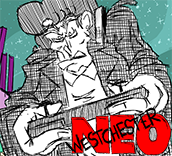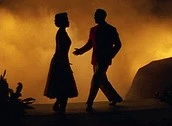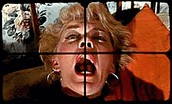by Sam Juliano
Curiosity killed the cat, but satisfaction brought it back.
The juxtaposition of barnyard indifference and an insatiable officiousness fuels the irresistible Pony in the City, a handsomely mounted, digitally negotiated picture book by Wendy Wahman. Otis, a permanent resident of “The Pony Paddock,” an equestrian stable serving youthful riders in a rural retreat, evokes the inquisitive demeanor of Wilbur the Pig, but who takes a markedly more hands on approach to the quest for knowledge. Otis is the restless spirit of a quartet of fillies that includes Mosey, Whinny and Derby. He yearns to know where his riders live, if they do the same things he does, eat the same kind of food, and maintain themselves similarly. The intrepid Otis, understanding that there is no match for on location scrutiny a la Climb every mountain/Search high and low/Follow every byway/Every path you know mode escapes his domain, moving from rural to urban, miniature to gargantuan, uncomplicated to labyrinthine. For the youngest readers Pony in the City bridges the gap what exists and what may be by exploring the inherent possibilities in the relationship between children and the favorite animal of John Steinbeck’s Jody Tiflin.
Wahman is a major player in the regional Pacific Northwest picture book renaissance taking place over the past decade, one that includes fellow talents such as Jessixa Bagley, Elizabeth Stanton and Toni Yuly. Wahman and her Evergreen State colleagues have produced a run of extraordinary works, while conducting regular readings and presentations in book stores and classrooms in the region. Wahman has specialized in books about animals, with Don’t Lick the Dog, A Cat Like That and Rabbit Stew winning many admirers in the classrooms and among the educators and librarians presenting them. Few author-illustrators are as adept as Wahman in imbuing her animal and human characters with such a carefree similitude and the sense that there is a natural kinship between living creatures that ultimately trumps the intellectual schism.
Otis the Pony according to spirited front sketch pad end papers resides in “The Pony Paddock” a cozy barn house stable where fellow colts, Mosey, Whinny and Derby are also housed. Otis is first seen in his stall as perky and adventurous, and after a lovely flash forward title page in front of a hat shop, is recipient to peppermints from a young girl named Dinah as David affectionately brushes out his thick black mane. Sporting a red equestrian helmet Mel, pulling on the reins, induces Otis into a gallop by uttering the magic words “Giddy-giddy-giddyup!” After the latest pony ride bonding between child and horse Otis is thinking in interrogative terms, wanting to know if his riders also “gallop and kick”, “nicker and neigh” and maybe “walk on all fours.” Delightful think bubbles envision Mela riding David, and Dinah playing follow the leader with toddlers perceived as distinctly pony-like. The older ponies will hear none of it though and express their dissatisfaction in no uncertain auditory terms. The coming of night at the Pony Paddock didn’t curtail the questions, as Otis again likened a child’s behavior as the same of his own. He wonders if they graze, get their manes brushed, wear blankets or sleep in stalls. Exasperated by Otis’s perceived precociousness the older horses flick and snort and tell Otis to sleep.
But soon enough Otis’ desired to know all about his fun loving passengers wasn’t anything he could fight off, so he breaks through a wooden fence, and seemingly guided by intuition heads over to some popular outdoor human sanctuaries. Clippity, clippity, Cloppity, cloppity are the aptly chosen onomatopoeia to denote this irrefutable if modest reverberation. Wahman’s vibrant and colorful Candy Land spread, when Otis comes upon a park and observes a plethora of children engaged in all kinds of activities, recalls two recent picture book spreads, one from Julia Sarcone Roach’s The Bear Ate Your Sandwich, where the titular intruder mistakes a city street for a different version of his forest environs, and another from Scott Campbell’s The Hug Machine when the most affectionate of young boys follows a similarly weaving rural path through parks and front yards to spread around his own measure of joyful embrace. Wahman opts for the perspective of stages, showing Otis in five spots where he observes a girl playing a guitar, four in a daisy patch, and a bunch of others playing soccer, a large playground group on swings and a sliding pond, kids inside and out an outdoor crib and others engaged in gymnastics.
Clippity Clippity, Cloppity cloppity signals the arrival of Otis at a cluster of houses -beautifully rendered in pastel grey-blue hues- and his exclamatory “Oh! Children live in such big barns!” will guarantee plenty of chuckles from classroom reading groups, as will the following interior tapestry of two children eating salad at a table with their dog, as Otis observes “Whoa! Children do graze on grass and daisies.” The continuing humor surrounding the pony’s misrepresenting what the kids do as horse-friendly includes the spying on a girl getting her hair brushed (“braided” says Otis) and two infants upright in their playpen “stalls” clasping the same blankets that a fatigued Otis wishes he had right then. Wahman’s second fabulous detailed double page canvas captures Otis seventeen times Clippity Cloppiting through congested streets and sidewalks, unable to find the right portal or direction to whisk him back to the friendly confines of The Pony Paddock, but also having to cope with his mounting hunger. Wahman’s pictorial style in this remarkable spread is expressionistic in line shapes and tone, though for kid readers it projects the intended consternation wrought by an alien maze of concrete and bricks. The night makes it even more difficult and in the marvelous encore double page spread Otis doges the headlights of cars, an eviction notice from a hotel doorman, barking dogs, and two men emerging from a truck identified as the Pony Posse. Wahman incorporates some splendid humorous touches by having Otis take special note of a statue featuring a knight on a horse, and a stone lion. After an exhausting day trying to find his way home Otis sleeps near a garbage bin covered by newspapers showing headlines of his disappearance.
Thinking he has found one of his three pony friends, Otis against all odds runs into Dinah, David and Mel and happiness and relief ensue. He is led back to his barn stable white the three children sing him a song. After some carrots and oats he is curried and combed before being blanketed for rest. Bringing this exhilarating story full circle the once ornery older horses were now full of the same questions Otis once posed. Intrigued by their own curiosity he answered all their questions one by one. By the book’s final blissful scene along the fence where are the book’s human and horse characters have a better understanding of each other, readers will surely know Otis fully needed to go through his baptism under fire.
Pony in the City, which concludes with a sketched detailed map of the region, is wildly popular in the classrooms. It is superlatively-conceived, beautifully and intricately illustrated and fueled by the inimitable effervescent energy Wahman is known for in her work. It has well earned close scrutiny by the 2017 Caldecott committee.
Note: This is the seventh entry in the 2017 Caldecott Medal Contender series. The annual venture does not purport to predict what the committee will choose, rather it attempts to gauge what the writer feels should be in the running. In most instances the books that are featured in the series have been touted as contenders in various online round-ups, but for the ones that are not, the inclusions are a humble plea to the committee for consideration. It is anticipated the series will include in the neighborhood of around 30 titles; the order which they are being presented in is arbitrary, as every book in this series is a contender. Some of my top favorites of the lot will be done near the end. The awards will be announced in mid-February, hence the reviews will continue until around the end of January or through the first week of February.



























 Click on names for archives
Writers/Founders
Click on names for archives
Writers/Founders
Sam, this book looks like a winner. I tried to secure a copy, but found another by Wahman (Rabbit Stew). I am assuming it recently released. I can see the vast appeal for the earliest grade level. Lovely illustrations.
Another wonderful review. You are on a roll.
Ricky, it is of recent vintage. I’m sure copies with appear soon. RABBIT STEW is mighty nice! Yes very popular with the lower grades as I have happily leaned in the past weeks. Thanks so much for the exceedingly kind words.
Great review. A fine addition to the horse literature.
Thanks John! It is indeed!
Sam — The attractive color combinations in the illustrations pulled me right into the pages!
Aye Laurie, the illustrations are so vibrant and colorful. Thank you!
I can see why this is such a fun read. Splendidly written review Sam!
Thanks so much Peter. A real classroom hit!
Perched upon a story of charming audacity, Pony in the City quietly moots affinities between various animals. Your very fine account, Sam, concerns letting modest perceptions play an honorable role while seeming subservient.
Jim thanks again for your splendidly astute observations. This story does indeed “quietly moot affinities between various animals.” Much appreciated.
Wendy Wahman presents the story with humor, warmth and meaning and then pulls it all together with an element of surprise that keeps young minds and older readers engaged and charmed.
Beautifully framed Kathryn! Thanks so much!
Thank you, Sammy! You know how much this means to me and my herd.
Aye I do Wendy. It has been a real pleasure. Thanks to you too!
Surprising choice! I located a copy and am quite captivated. Lovely illustrations. Your review is superb.